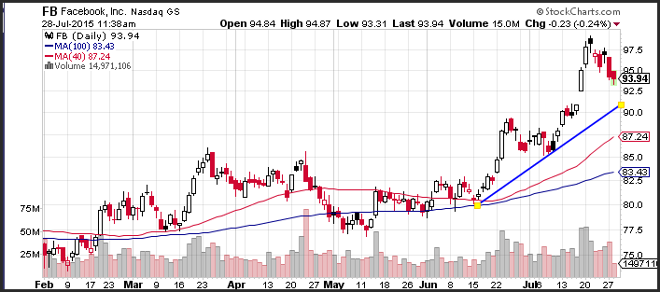Advertisement
Advertisement
5-Trailing Stop Methods
Updated: Mar 5, 2019, 14:40 GMT+00:00
Risk management is the most important part of your trading plan. Prior to entering any trade, you should have a good idea of where you want to stop out,
Risk management is the most important part of your trading plan. Prior to entering any trade, you should have a good idea of where you want to stop out, and where you want to take profit. There are occasions, when a market begins to trend and to take advantage of this type of movement, you might consider employing a trailing stop.
A trailing stop loss moves with the market, and continues to climb as the market climbs. Here are 5-different methods of employing a trailing stop loss.
1) you may use a Percent level below or above to change your stop loss. Once the stock reaches your take profit level you may increase your stop loss to a price that is X percent below the market. As the market climbs, you may change your stop loss level of a daily basis to increase the stop point.
For example, when Facebook increased from $80 to $89 in June, if you purchased it at $89 you could set a stop loss at 5% (95% of the value of the stock at $89 is $84.5). After each close you would possibly alter the price of the trailing stop loss which will either increase or decrease as the market changes. The price used to determine your trailing stop loss is subjective, but the close of the day is usually a good target.
2) you may use a trailing stop loss that is based on the lowest low over the past X days. Here you may use support levels (or resistance if the market is declining), to change the stop loss level based on key supports on price. Since this methodology is more precise, you may need to be more active in determining your stop levels.
3) you may use a medium term moving average. Here you might target your stop loss as a medium term moving average. For example, you might purchase Facebook and hold it until it crosses below the 40-day moving average. If the price of the stock continues to climb, you may hold the position until the stop loss is breached.
4) you may use a long term moving average. In this instance, you might wait until the price of the stock moves below a long term moving average before you would exit your position.
5) you may use trend line support (or resistance). In this instance your trailing stop loss would increase along with the slope of a trend line and you might hold on to your long (or short) position until the price of the security closed below (or above) your trend line.
Risk warning: Forward Rate Agreements, Options and CFDs (OTC Trading) are leveraged products that carry a substantial risk of loss up to your invested capital and may not be suitable for everyone. Please ensure that you understand fully the risks involved and do not invest money you cannot afford to lose. Our group of companies through its subsidiaries is licensed by the Cyprus Securities & Exchange Commission (Easy Forex Trading Ltd- CySEC, License Number 079/07), which has been passported in the European Union through the MiFID Directive and in Australia by ASIC (Easy Markets Pty Ltd -AFS license No. 246566).
This article is a guest blog written by easy-forex
About the Author
Did you find this article useful?
Latest news and analysis
Advertisement
